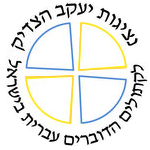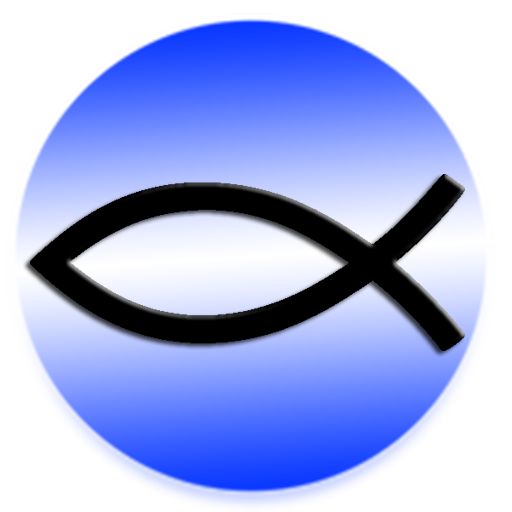Old Testament: Jewish tradition and Christian tradition
The Bible of the Jewish people is the Bible of Jesus Christ and, following him, of the Church. However, a well defined, closed and organized collection is the result of decisions that were made much later. In determining the precise content, order and interpretation of the books of the Bible, the Rabbinic tradition and the tradition of the Church did not always reach the same conclusions. Father David answers the question: What is the difference between the TaNaKh (the Jewish collection of books) and the Christian Old Testament?
First and foremost, we must point out and emphasize again and again the great heritage that Jews and the Church share in the books of the Old Testament. Jews and Christians study the five books of the Law of Moses, they meditate the history of Israel, the people of God in the Bible, they pray the psalms written by David, they try to live according to the wisdom of the sages of Israel and they listen to the cry of the prophets and are comforted by their promises. The books of the Old Testament provide a basic language with which to speak of God, of the human person and of the relationship between them that is common to Jews and Christians.
In pointing to what is common, one can also discern what is different. Opening the Jewish TaNaKh and the Christian Old Testament side by side, one can see that there are some points of difference:
Content: There are more books in the Catholic Old Testament than there are in the Jewish TaNaKh. In the TaNaKh, there are 39 books whereas in the Catholic Old Testament there are 46 books. The Catholic tradition* defines some texts as integral to the Bible whereas these same texts do not appear in the TaNaKh. It is important to say that these texts are all ancient, written by Jewish authors before the birth of Jesus. These texts (in their Biblical order) are:
The Book of Tobit
The Book of Judith
The First Book of Maccabees
The Second Book of Maccabees
The Wisdom of Solomon
The Book of Ben Sira (Ecclesiasticus)
The Book of Baruch
In addition there are two books that are found in the TaNaKh but are longer in the Catholic collection, including passages that were added to these books by Jewish scribes (writing in Greek). These books are:
The Book of Esther
The Book of Daniel
The academic discussion about why these texts were not included in the TaNaKh whereas they were included in the Old Testament continues until this very day. However, some of these texts were not included in the TaNaKh because they were relatively late texts (written between the third and first centuries BC) and because they were written in Greek.
Order: How to put these books in order? This question becomes important only when it becomes technically possible to bind all these books together in one volume (a technical possibility from the fourth century AD onwards) and even more when the Bible can be produced in a large number of copies (after the invention of the printing press in the fifteen century).
The Jewish tradition divided the books of the TaNaKh into three parts:
Torah
Prophets (Newi'im)
Writings (Ketuwim)
The Christian tradition divided the books of the Old Testament into four parts:
Law
History
Wisdom
Prophets
The internal order of each part (except for the books of the Torah/Law) is also different. Here are some examples:
a. The last book in most editions of the TaNaKh is Second Chronicles (concluding with the epistle of Cyrus that calls for the Return to Zion). The last book of the Old Testament is Malachi (concluding with the promise that Elijah will come before the coming of the Lord).
b. In the TaNaKh, the five scrolls are found among the Writings and are usually ordered according to the liturgical order of the feasts on which they are read in the synagogue: Song of Songs (read on Passover), Ruth (read on Pentecost), Lamentations (read on the Ninth of Av), Kohelet (read on Tabernacles) and Esther (read on Purim). In the Christian tradition, each of these books is ordered according to its narrative content and literary genre. Ruth is placed after Judges (because it begins with the words: "In the days of the Judges") and before First Samuel (because it ends with the genealogy of King David). Esther (which takes place in the Persian period) is placed after Judith (takes place in the Babylonian period) and before First Maccabees (takes places in the Hellenistic period). Song of Songs and Qohelet (Ecclesiastes) are placed with the Wisdom books attributed to King Solomon, between Proverbs and Wisdom of Solomon. Lamentations is to be found alongside the Book of Jeremiah, attributed as it is to this great prophet, as he meditates the destruction of Jerusalem.
Content and order constitute the visible difference between the two collections. One can add that sometimes Jews and Christians interpret differently the same text. The Jew is conditoned in his/her reading by the Jewish tradition as defined by the rabbis and sages of Israel whereas the Christian is conditioned in his/her reading by the teaching and life of Jesus Christ as they appear in the New Testament. Thanks be to God that in our time we are listening more and more to one another, learning more and more from one another and respecting one another more and more. What is common unites us, what is different need not separate us.
* The Catholic tradition is a little different from the Protestant tradition, born with Martin Luther in the 16th century. Luther emphasized the content that was to be found in the Jewish tradition and gradually the texts that were not to be found in the TaNaKh disappeared from Protestant Bibles. Significantly, Luther did not change the order of the books that had become traditional for Christians. In the Orthodox and Eastern Churches: one can sometimes find an Old Testament according to the Protestant tradition, at other times that of the Catholic tradition, and sometimes one finds a more extensive collection than even the Catholic one, including other books like Third and Fourth Maccabees, Manasseh's Prayer, First and Second Esdras, and even Jubilees and Enoch.












 Rosh HaShana – the Feast of God the Father
Rosh HaShana – the Feast of God the Father Four Words For the Easter Season
Four Words For the Easter Season Ash Wednesday of T. S. Elliot
Ash Wednesday of T. S. Elliot Holy Wednesday
Holy Wednesday Epiphany – the light will conquer the darkness
Epiphany – the light will conquer the darkness